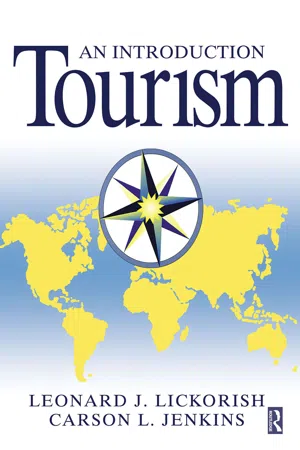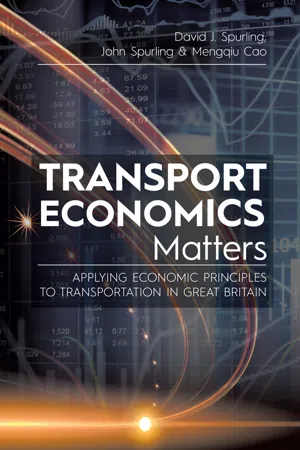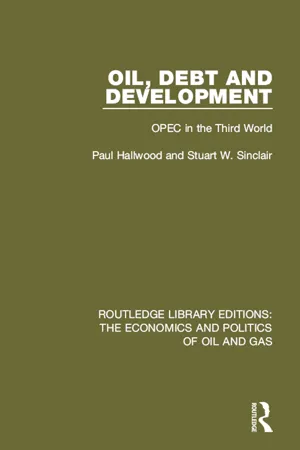Developing Countries
Developing countries are nations with lower levels of industrialization and income compared to more advanced economies. They often face challenges such as poverty, inadequate infrastructure, and limited access to education and healthcare. These countries are working to improve their economic and social conditions through various development initiatives and international assistance.
6 Key excerpts on "Developing Countries"
- eBook - ePub
Contemporary Economics
An Applications Approach
- Robert Carbaugh(Author)
- 2016(Publication Date)
- Routledge(Publisher)
...Also, the Chinese economy started embracing capitalism. These nations are known as transition economies. The advanced nations are those of North America and Western Europe, plus Australia, New Zealand, and Japan. Most nations of the world are classified as developing nations. These nations include most of those in Africa, Asia, Latin America, and the Middle East. Compared to advanced countries, Developing Countries generally have lower levels of real GDP per capita, shorter life expectancies, and lower levels of adult literacy. For developing nations, obstacles to economic growth include inadequate natural resources, low rates of saving and investment, shortages of capital goods, low productivity levels, modest technological advancement, and lack of access to the markets of advanced countries. Many developing nations experience a vicious circle of poverty: They save little and thus invest little in physical and human capital because they are poor, and because they do not invest, their outputs per capita remain low and they remain poor. In attempting to achieve economic development, poor countries have pursued two competing strategies, import substitution and export-led growth...
- eBook - ePub
- Leonard J Lickorish, Carson L Jenkins(Authors)
- 2007(Publication Date)
- Routledge(Publisher)
...However, in Asia there are also very poor countries such as India, Bangladesh and Nepal. In each of the regions of the world, there are relative levels of development which makes the concept of ‘Developing Countries’ a very broad one. Developing economies are given different titles, e.g. less developed countries, Developing Countries, Third World countries. The latter expression is one which has gained much currency over the years. It is interesting to note how the term is derived. Before the break-up of the former Soviet Union, the world was categorized into three major groups. First, were the developed, market economies, such as those who are members of the OECD. These are the most developed countries in the world which have a market economy as the major feature of their development. The second group of countries were members politically or economically of the old Comecom system, based very much on economic and political links with the Soviet Union. These countries tended to be characterized by economic planning based on centralized principles. The third group of countries were those in the developing world; some, e.g. Kenya and Barbados, followed free-market principles of development, whereas others, e.g. Sri Lanka, the Seychelles and Syria, were countries which tended towards more centrally planned economies. It was this third group which were collectively described as the Third World. With the break-up of the former Soviet Union, the term Third World is perhaps no longer appropriate as many of the former Comecom member countries are rapidly dismantling centralized planning and adapting to free-market economies. However, the term Third World is still used and as a broad generalization does describe a group of countries, some very large, e.g. India, Bangladesh and Indonesia, and other very small, e.g...
- eBook - ePub
Transport Economics Matters
Applying Economic Principles to Transportation in Great Britain
- Mengqiu Cao(Author)
- 2019(Publication Date)
- BrownWalker Press(Publisher)
...Chapter 25 Developing Countries I t has become more difficult to define Developing Countries especially since the Organization of the Petroleum Exporting Countries (OPEC) price rises in 1973–1974. It is perhaps easier to recognise Developing Countries such as India, Bangladesh and Pakistan rather than to define them. In general, economists think of Developing Countries as having almost by definition a low income. Some economists, however, distinguish between the newly industrialised countries (NIC) which have fairly high economic growth rates and other Developing Countries. There is not an adequate definition of a developing country. Most definitions have been based on the Gross National Product (GNP) or Net National Product (NNP) per head. The problem with this measure is that it is more useful where people have similar patterns of lifestyle and expenditure. It is not very useful when economists try to compare a subsistence style economy with one which is specialist. The use of GNP and NNP only refers to absolute levels of incomes measured in terms of a given international currency for example the dollar. This method of measurement has understated the levels of income and development in Developing Countries. A more useful method of comparing development in different countries is the ‘Purchasing Power Parity’ (PPP) approach as proposed by the World Bank. This measure seeks to capture the actual value gained from different currencies in different countries for a general basket of goods and services. For example, travelling a distance of 60 miles, for example from Canterbury to London will cost £30 whereas travelling the same distance in Kenya, say from Nairobi to Kenol would cost KES150. Assuming the exchange rate is KES130 to £1, so it would cost £1.15, then travelling the same distances in the UK is 26 times more expensive than in Kenya...
- eBook - ePub
Development Economics
Its Position in the Present State of Knowledge
- John Knapp(Author)
- 2018(Publication Date)
- Routledge(Publisher)
...In this respect the position of the smaller overpopulated countries, some of them overcrowded islands, is harder than that of a big overpopulated country like India with a domestic market potentially large enough to yield the economies of scale. While a few small countries like Hong Kong and Puerto Rico may have found an escape route in the export of “simple manufactures” and/or emigration, this is not likely to be open to the others because of various obstacles, partly of their own creation, and partly created by the advanced countries, (iii) Above all, it should be stressed that the underdeveloped countries are at widely varying stages of general social, political and economic development. At one end of the scale are a few countries, like India, Mexico and Brazil, which have reached a stage of development where they may be considered to be within a reasonable striking distance of the “take-off”...
- eBook - ePub
Oil, Debt and Development
OPEC in the Third World
- Paul Hallwood, Stuart Sinclair(Authors)
- 2016(Publication Date)
- Routledge(Publisher)
...The OPEC group, however, was by no means composed wholly of wealthy states. Although after the succession of oil price rises in the 1970s the 320 million citizens in OPEC countries enjoyed a mean per capita income of $4,542 (at 1975 prices), OPEC still numbered among its populations millions of people who remained virtually untouched by the rising living standards elsewhere in their countries. These millions, who have been termed the ‘village underclass’, or the ‘rural excluded’, remained little better off after the decades of official development effort. As was mentioned earlier, dissatisfaction with the First Development Decade was due largely to the increasingly frequent discovery by economists that high rates of economic growth, particularly in a country with a medium to large population, were in themselves no guarantee that personal living standards throughout the country were rising. Writing on the theme of growth and redistribution, Chenery emphasised that ‘a decade of rapid growth in under-developed countries has been of little or no benefit to perhaps a third of their population. Although the average per capita income of the third world has increased by 50% since 1960, this growth has been very unequally distributed among countries, regions within countries, and socio-economic groups’ (Chenery, 1974). Thus it came to be widely recognised that ‘growth’ – which could be fairly easily measured by standard macroeconomic indicators – and ‘development’ – which by nature could easily be appraised – were two distinct concepts. Some writers maintained that while the two were conceptually different, growth was not a sufficient condition for development; others took the view that under certain circumstances the two could even by antithetical. In some ldcs, differentiation between groups of residents has been growing more and more obvious at this internal level...
- eBook - ePub
Economics of Development
Theory and Evidence
- A.P. Thirlwall, Penélope Pacheco-López(Authors)
- 2017(Publication Date)
- Bloomsbury Academic(Publisher)
...(similar to that found by Gallup and Sachs, 2001).Summary•The economic and social development of poor countries requires educated and literate people; an equitable participation of men and women in the labour force; and well-nourished, healthy people free from the debilitating diseases that affect work effort and productivity.•Investment in human capital takes the form of expenditure on formal education; on-the-job and institutional training; study programmes and adult education; nutrition programmes; and expenditure on health facilities.•There is serious underprovision of education facilities and opportunities in many poor countries – particularly with regard to secondary and tertiary education. Literacy rates are low.•Private rates of return to education are high in poor countries, averaging 10%.•Investment in education can add substantially to the growth performance of countries.•There is serious discrimination against women in Developing Countries. Gender equality in education, employment opportunities, voice in society, and access to credit should be an integral part of the development process.•Women’s health has been neglected in poor countries and needs urgent attention.•For individuals to achieve their potential and lead healthy and productive lives, they need the right nutrition from birth – but millions remain malnourished throughout their lives.•The WHO has a comprehensive plan to tackle maternal, infant and young children malnutrition, targeting child stunting; anaemia; low birth weight; child overweight; breast feeding; and wasting.•Good health requires clean water, but three-quarters of a billion people lack access.•There is a vicious circle between poverty and ill health...





